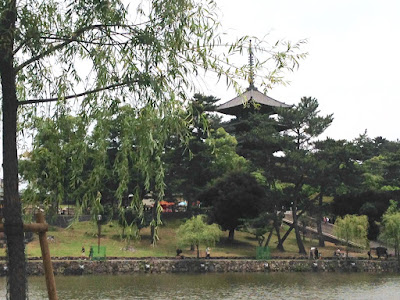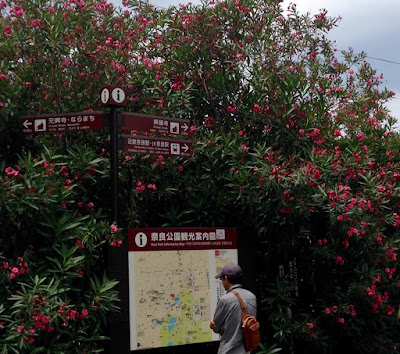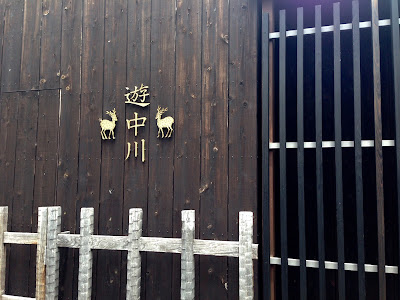"Gen Japan" is a bilingual (Japanese and English) video site with the goal of spreading the charms of Japan. You can get to know more about Japan and its local cities such as Fukui Prefecture our office is located. Twitter @GenJapan https://www.facebook.com/genjapan/ https://www.instagram.com/genjapancom/ https://www.youtube.com/channel/UC0xlZ7_5WxXs1awwe_Myk7w
2017年7月30日日曜日
“Hacksaw Ridge” directed by Mel Gibson
2017年7月21日金曜日
Barbecue in the rainy season
By the way, I enjoyed a barbecue with friends the other day.
Usually, people enjoy barbecues in midsummer though, it also seems that the rainy season is good for barbecue because the weather is mostly cloudy, so it’s not too hot.
We had it on the left bank of Itagaki-bashi Bridge over Asuwa River in Fukui City. There is no washing place, no toilet facility but there is a public toilet facility at the north end of the Itagaki-bashi Bridge.
We didn’t use the city’s equipment such as the tables or the hearths and did
the barbecue under the Itagaki-bashi Bridge. Because it was the pathway of winds and comfortable, we won’t be wet by a sudden rain and are able to avoid the sun
if it’s sunny.
We shared food and desserts each one brought and could not stop talking with beer and wine. (H.S)
2017年7月20日木曜日
24 Hours Ice Shop in Fukui, Japan
Naver matome / photographs of beautiful ice (https://matome.naver.jp/odai/2134095238237307201)
It has been very hot in Japan recently. Eating snow cone and/or touching ice would be nice in this kind of hot weather.
There are several ice shops in the downtown area of Fukui City. There is even 24 hours open one as well. This is a self-serve ice shop. This is an ice shop has no salesclerk.
As you walk in, you will see a sign which says that “block ice for 300 yen” on a large refrigerator. Since it’s large ice, so this type of ice can be used for making snow cones for business purpose.
They sell crushed ice as well. This can be used for drinks as well.
To keep foods and/or drinks cold, “Kuzu Kohri” (Kuzu is waste and Kohri is ice in Japanese. Kuzu Kohri is the leftover ice which was made after cutting the ice for block ice and crushed ice.)
The sign says “Mr. Crushed” and “Unique Ice!”. I wonder what they look like.
And in the back of the ice shop, there is a screen for security cameras.
To pay, put the money into an envelope with your name on it and put it into the box in the photograph above. This is amazing that the owner of this store must be confident that people pay.
I think this is the best spot for this kind of shop because it is in the middle of a downtown area and people need ice all the time.
This shop was introduced in a TV program in NHK (famous Japanese TV company)
NHK documentary, 72 hours “self-serve ice store in Summer of Fukui”. https://www.nhk.or.jp/docudocu/program/210/1199146/index.html *Only available in Japanese
T.F
If you have a chance, how about stopping by the ice store “Sakura Kohri”?
"Sakura Kohri"
Shishido Building, 1-17-2 Junka,
Fukui-shi, Fukui-ken
2017年7月12日水曜日
Strolling along “Naramachi” street
“Naramachi” is located on the south side of Nara Park and 15 minutes walk from Kintetsu Nara Station. The area used to be in the precincts of Gangoji Temple Gokurakubo and the extra section of the ancient capital in Nara called Heijokyo.
There are temples that were founded in Nara period, tradesmen’s houses since the late Edo period and modern new shops in Naramachi, so you can enjoy both old and new in the quiet and the somehow familiar area where has a lot of narrow alleys. Also, in June, cat-lover shopkeepers in Naramachi appeal their affections for cats display their products which have the motif of cats.
So, if you are a cat lover, why don’t you come to Naramachi in June? (H.S)
2017年7月11日火曜日
Hydrangea
As we introduced in our blog in May that Asuwa river is listed among “Japan’s Top 100 Cherry Blossom Spots”. The area is filled with visitors during the cherry blossom season every year. In spring, you can enjoy seeing the cherry blossom trees and you can enjoy seeing a lot of beautiful hydrangeas in rainy season which is from the mid May to the beginning of July.

The other day, I was walking on the side walk of the Asuwa river and I saw many beautiful hydrangeas. Most of the colors of the flowers were purple. The purple of the flowers stood out in the color of the sky and trees which kept my eye for a while.
Hydrangea lets us know that rainy season in Japan has arrived and it also makes the atmosphere in our city. If you have a chance to visit Asuwa river in Fukui City in Japan, how about enjoy taking a walk on the sidewalks of the river?
In Fukui City, there is another spot for hydrangeas which is in Mt. Asuwa and it's called "Ajisai (hydrangea) Road". I’m sure that you will get to relax and enjoy seeing the hydrangeas there as well.
Guide to Outings Around Fukui: No.1 Mt. Asuwa area Beautiful Natrure Walk: http://www.fukuicity-navi.com/090_others/walk_english/pdf/pdf_outings_asuwa.pdf
T.F
2017年7月4日火曜日
Musikfest NARA 2017
During the festival, there are always some concerts of different genres of music from inside and outside Japan, mainly classical music every day. They are held at shrines and temples where include world heritages which Nara is proud of, art museums and halls.
Among those concerts, I have come to Nara with the aim of seeing “Songs and entertainment of Okinawa” concerts, which have been held on the third weekend since 2014. It is an open-air free concert, and held in Kasugano-enchi, where is located in the back of Nara Park and has view of Mt. Wakakusa. Although it’s free, great musicians come on the stage every year. They are all irresistible musicians for Okinawan music fans.
And this year, Kazufumi Miyazawa, who was a member of former THE BOOM, appeared and gave an amazing performance such as “Shimauta” and “Shinkanuchaa”. In nature surrounded by greenery, it was really great and I trembled all over with the performance. Also, it brought the audiences together. I admire Nara Prefecture that they hold such substantial free concerts every year. (H.S)
Male duo D-51. They sing their greatest hit “NO MORE CRY” After all, it’s a good song! (The photo is from Musikfest NARA 2017 official website)
Happy people who are dancing in a dance area at the back.
(The photo is from Musikfest NARA 2017 official website)
The second day was “Sanshin Day” and some people brought their own sanshin and they played together.
(The photo is from Musikfest NARA 2017 official website)
People are dancing Kachaashii(Okinawan dance)in their own way, in front of the stage. (The photo is from Musikfest NARA 2017 official website)
Relaxed fawn with its mother deer. It’s nice to see mother and child any time.
At the same time, Oktoberfest originated from Germany is held in the Nara Park. It seems that performances on the stage there were also warmed up.
Local line schedule, Kadohara station in Fukui, near Mt.Arashima
On the other Thursday, I took a short ride of Etsumi-hokusen, a local train between Fukui and Ono, from Kadohara to Shimo-Yuino to go back to the place I parked my car, after hiking in Mt.Arashima.
Because there is one of entrances of Mt.Arashima 1,523m (4,997ft) near here, many hikers use this station to approach that mountain.
It is not so high but being an isolated peek with outstanding view, and because a famous writer Kyuya Fukada chose it as one of "One Hundred Mountains in Japan" back in the 1960s, the mountain is very popular among the hikers ever in Japan.

Kadohara station and a train operated without a conductor
There are few trains on the schedule here as you see above, and it's not so convenient for us especially on weekdays. However, I saw quite a number of people in the mountain, who came from Hokkaido, Tokyo and the other places far away. That's "One Hundred Mountains in Japan".
T.S






























